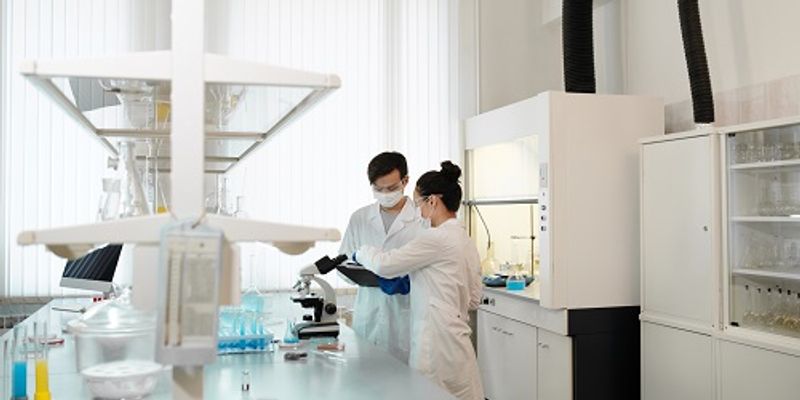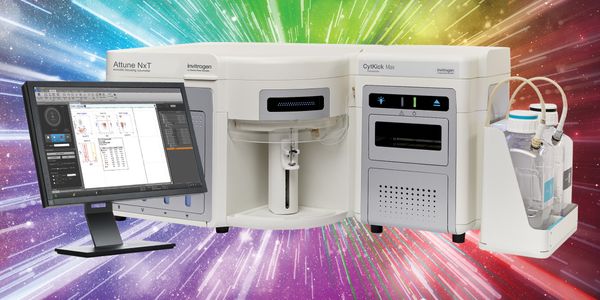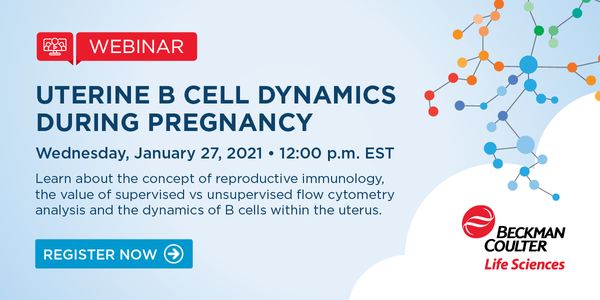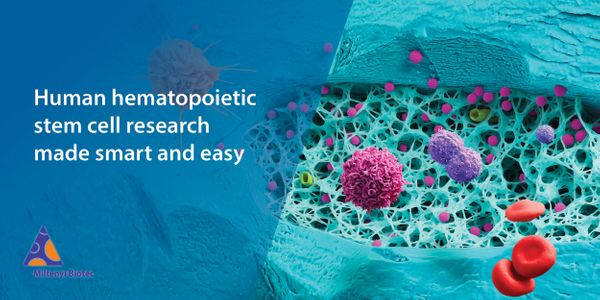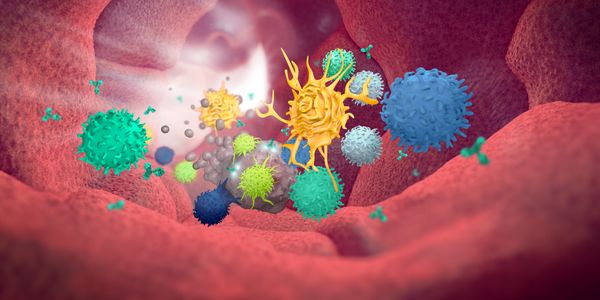Gene and Cell Therapy
With the goal of treating and curing disease, gene and cell therapy provide treatment by means of altering a person's genetic code and transferring live cells to improve symptoms and reduce levels of disease-causing proteins.
-
FEB 24, 2021 | 7:30 AMSpecific biomarker assays are included in an increasing number of drug labels, with uses ranging from prediction of adverse events to providing insights on efficacy for patient populations....Speaker: Steven M. Anderson, PhDPresented at: Drug Discovery & Development Virtual Event Series 2021
FEB 10, 2021 | 12:00 AMOrganoids are emerging tools to study homeostatic function and disease of human organs. This technology has now for the first time been extended to reptiles by establishing cultures of the s...FEB 09, 2021 | 8:00 AMDATE: February 09, 2021 TIME: 08:00am PST Flow cytometry immunophenotyping has become one of the mainstream applications for the diagnosis and classification of several hematologic neoplasms...FEB 03, 2021 | 8:00 AMDate: February 3, 2021 Time: 8:00am (PST), 11:00am (EST) This introduction webinar will provide you with an overview of the general immuno-oncology (IO) research field...JAN 27, 2021 | 9:00 AMDATE: January 27, 2021 TIME: 9am PST Well-timed interaction of correctly functioning maternal immune cells is essential to facilitate healthy placenta formation, as the uterine immune enviro...JAN 26, 2021 | 8:00 AMDate: January 26, 2021 Time: 9:00am (PST), 12:00pm (EST) Over the past years, CRISPR/Cas genome editing has quickly become the method of choice for genetic manipulation, owing to its ease-of...DEC 09, 2020 | 9:00 AMDATE: December 09, 2020 TIME: 09:00am PST Hematopoietic stem cells (HSCs) ensure homeostasis of blood throughout life. In this webinar, we share insights into the smart and easy isolation, c...DEC 03, 2020 | 4:30 PMThis drug development program is designed to create a family of broad-spectrum, pan-coronaviral drugs that respectively inhibit multiple key enzymes required for viral replication. By target...DEC 02, 2020 | 8:00 AMDATE: December 2nd, 2020 TIME: 08:00am PDT, 11:00pm EDT Bioreactors and shakers are used to cultivate microorganisms, plant, insect, and mammalian cells in different volumes. Upscaling of pr...NOV 19, 2020 | 9:00 AMDate: November 19, 2020 Time: 12:00am (PDT), 9:00am (CET), 4:00pm (SGT) We present split-FISH, a multiplexed fluorescence in situ hybridization method that leverages a split-probe design to...NOV 12, 2020 | 12:00 AMImmunohistochemistry (IHC) is used to determine spatial relationships where we can identify the localization of target proteins in specific regions and cells of a tissue. IHC has been the go...NOV 05, 2020 | 7:00 AMDATE: Date needed, 2020 TIME: Time needed Exosomes are a population of naturally occurring mobile, membrane-limited, 30 – 100 nm in diameter, extracellular vesicles containing a large...Speaker: Jorge Escobar , Aurélie TachenyNOV 04, 2020 | 11:00 AMDATE: November 4th, 2020 TIME: 11:00am PST As cell therapies become more complex, the need for robust analytical tools to characterize such products as they enter the clinic has increased in...OCT 22, 2020 | 6:05 AMPrecision oncology is revolutionizing the diagnostic and therapeutic approach to cancer. In fact, the availability of tumor-specific and tumor-agnostic biomarkers and matched therapies is ra...OCT 22, 2020 | 6:05 AMPrecision oncology is revolutionizing the diagnostic and therapeutic approach to cancer. In fact, the availability of tumor-specific and tumor-agnostic biomarkers and matched therapies is ra...OCT 20, 2020 | 9:00 AMDATE: October 20th, 2020 TIME: 08:00am PT, 11:00am ET Tumor-associated macrophages (TAMs) are key cells in the tumor microenvironment (TME) with diverse immune functions that have a major in...OCT 08, 2020 | 6:00 PMWhile circulating cell-free DNA (ccfDNA) and to some extend CTCs from blood are routinely used as analyte in liquid biopsy cancer research applications, circulating cell-free RNA (ccfRNA) ha...Speaker: Thorsten Voss, PhDOCT 08, 2020 | 6:00 PMSoluble cytokine biomarkers are the master regulators of cell-to-cell communication-- the means by which one cell tells another what to do or where to go. Determining the biomarker signature...Speaker: Jenny Koenitzer, PhDOCT 08, 2020 | 4:30 PMMultiplex detection of oncogenic mutations using LNA-based assays on the QIAcuity digital PCR system Digital PCR (dPCR) enables specific and sensitive detection of genetic alterations in onc...Speaker: Dr. Özlem KaralayOCT 08, 2020 | 3:00 PMThe continued rapid expansion of immunotherapies, including both in vivo and ex vivo therapeutics, has driven the development and adoption of novel tools to study, asses and understand these...Speaker: Benjamin Borgo, PhDOCT 08, 2020 | 1:30 PMMartin highlights various factors impacting molecular analysis from FFPE samples and key challenges and considerations while working with this precious yet challenging sample type. Learning...Speaker: Martin Schlumpberger, PhDOCT 08, 2020 | 12:00 PMAntibodies have become one of the most important tools in life science research, allowing the detection, quantitation, and determination of changes in proteins and other molecules with respe...Speaker: Wayne Speckmann, PhDOCT 08, 2020 | 10:30 AMImmunohistochemistry (IHC) is used to determine spatial relationships where we can identify the localization of target proteins in specific regions and cells of a tissue. IHC has been the go...Speaker: Vivian Barry, MSPresented at: Cancer Research & Oncology Week Virtual Event Series 2020
Sponsored By: Roche DiagnosticsOCT 08, 2020 | 9:00 AMMutations in the epidermal growth factor receptor gene (EGFR) and the known Kirsten rat sarcoma viral oncogene (KRAS) are significant drivers in the development of non-small-cell lung cancer...Speaker: Hestia Mellert, PhDPresented at: Cancer Research & Oncology Week Virtual Event Series 2020
Sponsored By: Bio-Rad Laboratories
FEB 24, 2021 | 7:30 AM
Specific biomarker assays are included in an increasing number of drug labels, with uses ranging from prediction of adverse events to providing insights on efficacy for patient populations....
Speaker:
Steven M. Anderson, PhD
Presented at: Drug Discovery & Development Virtual Event Series 2021
FEB 10, 2021 | 12:00 AM
Organoids are emerging tools to study homeostatic function and disease of human organs. This technology has now for the first time been extended to reptiles by establishing cultures of the s...
FEB 09, 2021 | 8:00 AM
DATE: February 09, 2021 TIME: 08:00am PST Flow cytometry immunophenotyping has become one of the mainstream applications for the diagnosis and classification of several hematologic neoplasms...
FEB 03, 2021 | 8:00 AM
Date: February 3, 2021 Time: 8:00am (PST), 11:00am (EST) This introduction webinar will provide you with an overview of the general immuno-oncology (IO) research field...
JAN 27, 2021 | 9:00 AM
DATE: January 27, 2021 TIME: 9am PST Well-timed interaction of correctly functioning maternal immune cells is essential to facilitate healthy placenta formation, as the uterine immune enviro...
JAN 26, 2021 | 8:00 AM
Date: January 26, 2021 Time: 9:00am (PST), 12:00pm (EST) Over the past years, CRISPR/Cas genome editing has quickly become the method of choice for genetic manipulation, owing to its ease-of...
DEC 09, 2020 | 9:00 AM
DATE: December 09, 2020 TIME: 09:00am PST Hematopoietic stem cells (HSCs) ensure homeostasis of blood throughout life. In this webinar, we share insights into the smart and easy isolation, c...
DEC 03, 2020 | 4:30 PM
This drug development program is designed to create a family of broad-spectrum, pan-coronaviral drugs that respectively inhibit multiple key enzymes required for viral replication. By target...
DEC 02, 2020 | 8:00 AM
DATE: December 2nd, 2020 TIME: 08:00am PDT, 11:00pm EDT Bioreactors and shakers are used to cultivate microorganisms, plant, insect, and mammalian cells in different volumes. Upscaling of pr...
NOV 19, 2020 | 9:00 AM
Date: November 19, 2020 Time: 12:00am (PDT), 9:00am (CET), 4:00pm (SGT) We present split-FISH, a multiplexed fluorescence in situ hybridization method that leverages a split-probe design to...
NOV 12, 2020 | 12:00 AM
Immunohistochemistry (IHC) is used to determine spatial relationships where we can identify the localization of target proteins in specific regions and cells of a tissue. IHC has been the go...
NOV 05, 2020 | 7:00 AM
DATE: Date needed, 2020 TIME: Time needed Exosomes are a population of naturally occurring mobile, membrane-limited, 30 – 100 nm in diameter, extracellular vesicles containing a large...
Speaker:
Jorge Escobar
, Aurélie Tacheny
NOV 04, 2020 | 11:00 AM
DATE: November 4th, 2020 TIME: 11:00am PST As cell therapies become more complex, the need for robust analytical tools to characterize such products as they enter the clinic has increased in...
OCT 22, 2020 | 6:05 AM
Precision oncology is revolutionizing the diagnostic and therapeutic approach to cancer. In fact, the availability of tumor-specific and tumor-agnostic biomarkers and matched therapies is ra...
OCT 22, 2020 | 6:05 AM
Precision oncology is revolutionizing the diagnostic and therapeutic approach to cancer. In fact, the availability of tumor-specific and tumor-agnostic biomarkers and matched therapies is ra...
OCT 20, 2020 | 9:00 AM
DATE: October 20th, 2020 TIME: 08:00am PT, 11:00am ET Tumor-associated macrophages (TAMs) are key cells in the tumor microenvironment (TME) with diverse immune functions that have a major in...
OCT 08, 2020 | 6:00 PM
While circulating cell-free DNA (ccfDNA) and to some extend CTCs from blood are routinely used as analyte in liquid biopsy cancer research applications, circulating cell-free RNA (ccfRNA) ha...
Speaker:
Thorsten Voss, PhD
OCT 08, 2020 | 6:00 PM
Soluble cytokine biomarkers are the master regulators of cell-to-cell communication-- the means by which one cell tells another what to do or where to go. Determining the biomarker signature...
Speaker:
Jenny Koenitzer, PhD
OCT 08, 2020 | 4:30 PM
Multiplex detection of oncogenic mutations using LNA-based assays on the QIAcuity digital PCR system Digital PCR (dPCR) enables specific and sensitive detection of genetic alterations in onc...
Speaker:
Dr. Özlem Karalay
OCT 08, 2020 | 3:00 PM
The continued rapid expansion of immunotherapies, including both in vivo and ex vivo therapeutics, has driven the development and adoption of novel tools to study, asses and understand these...
Speaker:
Benjamin Borgo, PhD
OCT 08, 2020 | 1:30 PM
Martin highlights various factors impacting molecular analysis from FFPE samples and key challenges and considerations while working with this precious yet challenging sample type. Learning...
Speaker:
Martin Schlumpberger, PhD
OCT 08, 2020 | 12:00 PM
Antibodies have become one of the most important tools in life science research, allowing the detection, quantitation, and determination of changes in proteins and other molecules with respe...
Speaker:
Wayne Speckmann, PhD
OCT 08, 2020 | 10:30 AM
Immunohistochemistry (IHC) is used to determine spatial relationships where we can identify the localization of target proteins in specific regions and cells of a tissue. IHC has been the go...
Speaker:
Vivian Barry, MS
Presented at: Cancer Research & Oncology Week Virtual Event Series 2020
Sponsored By: Roche Diagnostics
Sponsored By: Roche Diagnostics
OCT 08, 2020 | 9:00 AM
Mutations in the epidermal growth factor receptor gene (EGFR) and the known Kirsten rat sarcoma viral oncogene (KRAS) are significant drivers in the development of non-small-cell lung cancer...
Speaker:
Hestia Mellert, PhD
Presented at: Cancer Research & Oncology Week Virtual Event Series 2020
Sponsored By: Bio-Rad Laboratories
Sponsored By: Bio-Rad Laboratories
